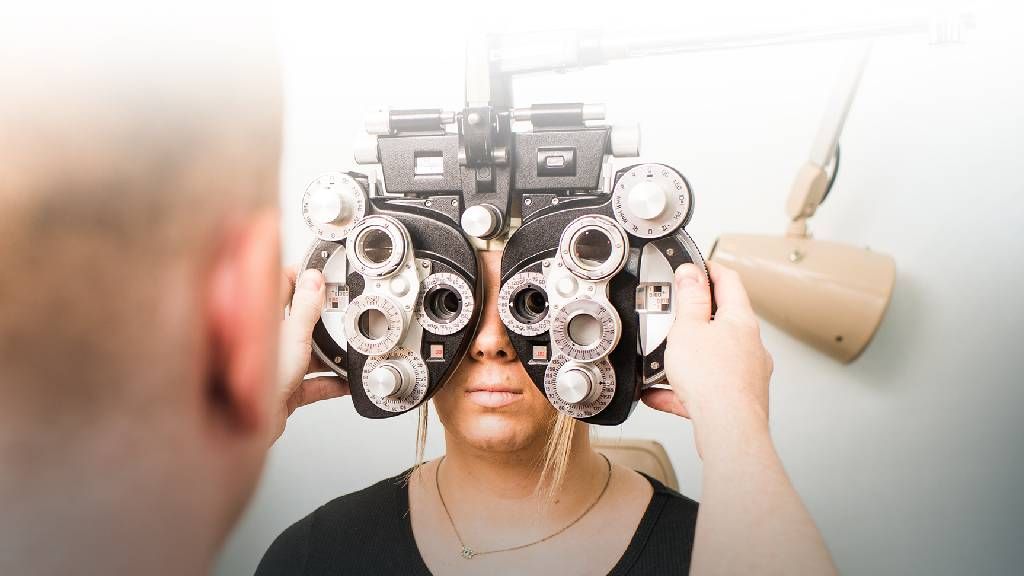Leading Eye Doctors in Andalusia: Schedule Your Consultation Today
Leading Eye Doctors in Andalusia: Schedule Your Consultation Today
Blog Article
Comprehending the Various Vision Correction Procedures Available for Clearer Sight
In the realm of vision modification treatments, a multitude of alternatives exist to attend to refractive errors and offer people with more clear sight. From the widely identified LASIK surgery to much less invasive procedures like PRK and implantable lenses, the area of ophthalmology offers a series of techniques tailored to match various demands and choices. Each treatment includes its own set of factors to consider, advantages, and potential threats. Recognizing the nuances of these vision correction techniques is vital for making notified decisions regarding one's visual wellness. Let's check out the ins and outs of these treatments and clarified the course to accomplishing enhanced vision clarity.
LASIK Surgery
LASIK surgical treatment is a common refractive treatment made use of to fix vision issues such as nearsightedness, farsightedness, and astigmatism. This surgical strategy, which stands for Laser-Assisted in Situ Keratomileusis, intends to reshape the cornea to boost exactly how light is focused on the retina, ultimately boosting vision clearness. During the procedure, a slim flap is created on the cornea, and a laser is utilized to remove accurate quantities of cells to reshape it suitably. This improving enables light to be properly concentrated onto the retina, remedying refractive errors.
Among the key advantages of LASIK surgical treatment is the fast enhancement in vision experienced by individuals. Several individuals discover a considerable improvement in their vision right away after the treatment. In addition, the majority of clients report very little pain and pain during the surgical treatment and healing period. The recovery time for LASIK is relatively quick, with many individuals going back to their day-to-day tasks within a day or 2 post-operation. In general, LASIK surgical treatment is a preferred choice for people seeking a long-lasting remedy for their vision troubles.
PRK Procedure

PRK is an appropriate alternative for individuals with thin corneas or those at a greater danger of eye injuries, as it does not involve creating a corneal flap. The recuperation process for PRK is slightly longer compared to LASIK, as the epithelium requires time to regenerate. Patients might experience discomfort and blurred vision for a few days complying with the procedure.
In spite of the longer recovery time, PRK can generate exceptional lead to vision renovation, making it an important alternative for those who may not be suitable candidates for LASIK surgical treatment. - Cardiologist Andalusia
Implantable Lenses
Unlike PRK where the cornea is improved straight, implantable lenses offer one more technique for dealing with vision by placing synthetic lenses inside the eye. This treatment is specifically helpful for individuals with high degrees of astigmatism, farsightedness, or nearsightedness that might not be suitable prospects for laser surgeries like LASIK or PRK.
Implantable lenses, additionally recognized as phakic intraocular lenses, job by supplementing the eye's natural lens with an artificial one. These lenses can be positioned before the natural lens (former chamber) or behind the iris and before the natural lens (posterior chamber) By changing the power and positioning of these lenses, eye doctors can successfully deal with refractive mistakes and improve aesthetic skill.
One benefit of implantable lenses is that they are removable and exchangeable, giving versatility for future adjustments. As with any surgical treatment, there are risks entailed, such as infection or cataract development. Clients taking into consideration implantable lenses must speak with an eye treatment professional to determine the most suitable choice based upon their individual needs and eye health.
Corneal Rings

The treatment for putting corneal rings is minimally invasive and fairly fast, frequently performed as an outpatient procedure. Throughout the surgical procedure, the ophthalmologist makes a tiny laceration in the cornea and inserts the rings at a certain deepness. Once in position, the rings assist to reshape the cornea, supplying a smoother surface area for light to go into the eye, which can result in clearer vision.
Corneal rings are taken into consideration a reversible procedure, as they can be gotten rid of or replaced if necessary. While they might not completely eliminate the demand for glasses or get in touch with lenses, corneal rings can substantially boost vision top quality and total visual convenience for individuals with keratoconus or various other corneal irregularities.
Refractive Lens Exchange
Following the adjustment of corneal abnormalities with treatments like corneal rings, an additional vision modification strategy that can resolve refractive mistakes is Refractive Lens Exchange (RLE) RLE is a surgery that includes replacing the eye's natural lens with a man-made intraocular lens (IOL) to deal with refractive errors such as presbyopia, nearsightedness, and farsightedness. This treatment is particularly advantageous for people that may not be More Info ideal prospects for treatments like LASIK or PRK as a result of elements such as thin corneas or high refractive mistakes.
RLE is comparable to cataract surgery, as both involve eliminating the eye's natural lens; however, in RLE, the a knockout post lens is clear, not gloomy as in cataracts. The fabricated lens dental implanted during RLE can be personalized to deal with the person's certain refractive mistake, giving clear vision at various distances. Recovery time for RLE is reasonably fast, and clients can expect enhanced vision not long after the procedure. Similar to any surgery, prospective risks and issues exist, so a complete examination with an eye treatment professional is essential to establish if RLE is the ideal vision correction choice.
Verdict

In the realm of vision improvement treatments, a wide variety of choices exist to resolve refractive mistakes and offer people with more clear view.LASIK surgery is a typical refractive treatment utilized to deal with vision troubles such as farsightedness, astigmatism, and nearsightedness.While also a typical refractive procedure, the PRK (Photorefractive Keratectomy) method differs from LASIK surgical treatment in its technique to dealing with vision issues.Adhering to the modification of corneal irregularities with procedures like corneal rings, an additional vision correction method that can deal with refractive mistakes is Refractive Lens Exchange (RLE) LASIK surgical procedure, PRK treatment, implantable lenses, corneal rings, and refractive lens exchange are all alternatives that can address various vision concerns.
Report this page